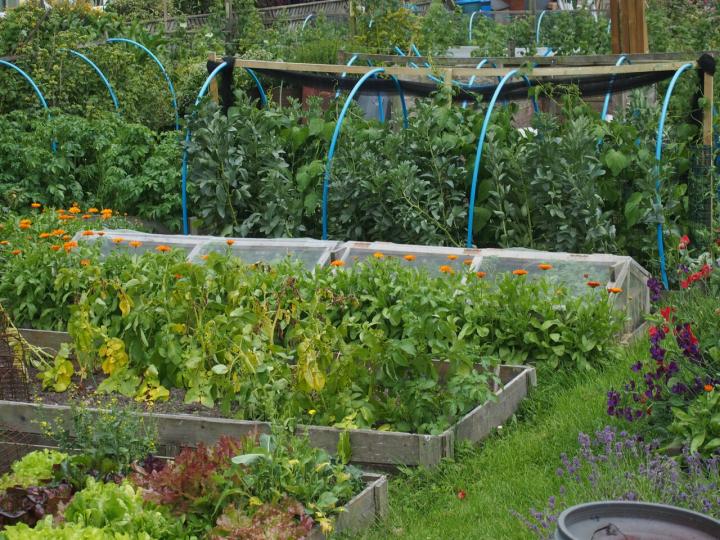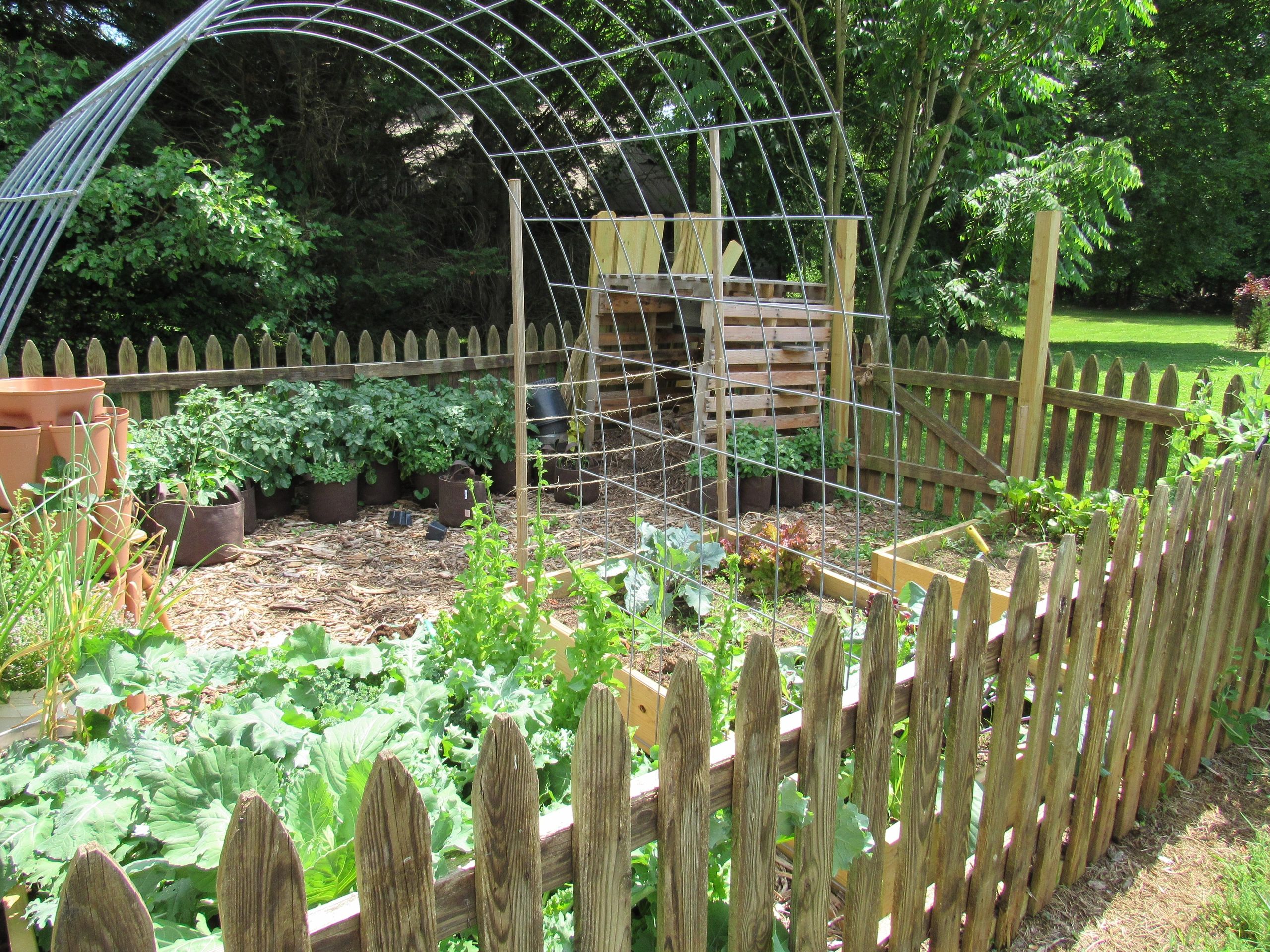How to Maintain Healthy Soil in Homestead Gardening
Wiki Article
Discover Essential Tips for Successful Gardening Techniques and Practices
Horticulture, often viewed as an easy leisure activity, includes a range of techniques and techniques that can dramatically affect the outcome of your efforts. By focusing on necessary components such as soil health and wellness, effective sprinkling strategies, and proper plant selection, garden enthusiasts can develop a growing environment that supports vivid growth. Additionally, understanding the nuances of parasite management and seasonal upkeep can further boost productivity. Yet, lots of enthusiasts overlook essential details that can make or break their gardening success-- exploring these ignored facets might reveal the secret to growing a flourishing yard.Understanding Dirt Health And Wellness
Dirt health is a basic facet of successful horticulture, as it directly affects plant development, nutrition schedule, and environment equilibrium. Healthy soil is defined by an abundant biodiversity of bacteria, natural matter, and a well balanced pH level, which with each other create a setting for plant development.To comprehend soil wellness, one should consider its physical, chemical, and organic properties. The structure and framework of dirt affect its capability to maintain wetness and nutrients, while the chemical make-up identifies the schedule of crucial elements like nitrogen, potassium, and phosphorus. Routine soil screening is important to assess these variables, allowing garden enthusiasts to make enlightened decisions regarding amendments and plant foods.
Additionally, advertising organic task within the dirt is crucial for keeping its health. Practices such as composting, crop rotation, and making use of cover plants can boost microbial variety, enhance nutrient biking, and lower soil erosion. By focusing on soil wellness, garden enthusiasts not just enhance plant growth but also add to a lasting environment, making sure that their gardening techniques are resilient and eco liable over time.
Effective Sprinkling Methods
Making certain that plants obtain the proper quantity of water is vital for their wellness and growth, specifically when paired with a strong foundation of dirt health (Homestead Gardening). Reliable watering techniques can substantially affect plant vigor, reducing water wastefulness and promoting optimum developmentOne basic method is deep watering, which motivates origins to expand much deeper right into the dirt, improving dry spell resistance. This strategy usually includes sprinkling less regularly but in bigger amounts, enabling dampness to pass through the root zone completely. Timing is also critical; morning is the excellent time to water, as it minimizes evaporation and allows foliage to dry throughout the day, decreasing condition dangers.
Furthermore, utilizing mulch can help maintain soil moisture and manage temperature, more assisting effective sprinkling practices. Utilizing a drip watering system can also give targeted moisture directly to the roots, ensuring that water reaches where it's most needed while preserving sources.
Keeping track of rains and soil dampness degrees can lead changes in your watering timetable, ensuring plants receive regular hydration without over-saturation. By adopting these effective sprinkling methods, gardeners can foster a successful environment for their plants go to these guys to grow.
Plant Choice and Positioning
How can the appropriate plant selection and strategic placement transform a yard into a flourishing ecosystem? The harmony in between plant ranges and their placement is essential for creating a dynamic garden. When choosing plants, think about factors such as climate, soil kind, and sunlight direct exposure. Native types are typically the very best selection as they are adjusted to local problems and require less maintenance.Strategic placement entails organizing plants according to their growth Visit Website practices and requirements. Taller plants should be positioned at the back of borders to stop shielding much shorter plants. Additionally, organizing plants with similar water and light demands can improve their growth and minimize competitors for sources.
Incorporating a diversity of plants not only includes aesthetic allure however also promotes biodiversity, attracting valuable bugs and pollinators. Take into consideration the seasonal modifications in your garden; choose a mix of evergreens, annuals, and perennials to make sure year-round rate of interest.
Last but not least, bear in mind to analyze the mature dimension of plants before planting to stay clear of overcrowding and make certain ample air circulation. Thoughtful plant selection and calculated placement develop a harmonious environment, allowing your yard to prosper while minimizing obstacles.
Parasite and Illness Monitoring
Reliable insect and disease administration is vital for maintaining a healthy and balanced garden community - Homestead Gardening. A proactive technique, integrating cultural, biological, and chemical approaches, can significantly lower the influence of insects and illness on your plants
Organic controls, such as presenting beneficial insects like ladybugs or predative termites, can keep pest populations in check without damaging the atmosphere. Additionally, keeping plant health and wellness through proper watering, fertilization, and pruning will bolster their durability versus conditions.
When treatment is essential, choose targeted chemical therapies, guaranteeing to follow application guidelines to minimize damage to non-target microorganisms. Constantly focus on sustainable techniques, as they promote lasting garden health and wellness and ecological balance. By integrating these strategies, garden enthusiasts can properly manage pests and illness, ensuring prospering plants and a productive garden.

Seasonal Upkeep Practices
In springtime, emphasis on soil prep work by testing pH degrees and including essential changes. Routinely inspect arising plants for bugs and diseases.As summertime techniques, make certain adequate irrigation while monitoring for signs of tension or disease. Trim back disordered plants to urge air blood circulation and reduce humidity around foliage. This technique not only enhances plant health yet likewise advertises flowering and fruiting.
With the arrival of autumn, it's time to get ready for wintertime. Clean up fallen leaves and debris to stop pest invasions, and take into consideration growing cover plants to improve dirt health. This period is also excellent for separating perennials and growing spring-flowering light bulbs.
Conclusion
Successful gardening rest on the combination of audio practices in soil health, watering, plant choice, pest management, and seasonal maintenance. By focusing on dirt testing and microbial variety, utilizing reliable sprinkling methods, and choosing proper plants, gardeners can create prospering environments. Furthermore, proactive parasite administration and attentive seasonal maintenance add dramatically to general garden vigor. Accepting these techniques promotes a productive and lasting horticulture atmosphere, making certain thriving growth and strength throughout the changing seasons.By prioritizing necessary components such as soil wellness, reliable sprinkling strategies, and appropriate plant choice, gardeners can produce a flourishing ecological community that supports vibrant development. Find Out More By prioritizing soil health, garden enthusiasts not only enhance plant growth however also contribute to a lasting environment, making sure that their gardening methods are resilient and environmentally liable over time.
Taller plants must be positioned at the back of borders to protect against shading shorter plants. Clean up fallen leaves and particles to prevent insect infestations, and consider growing cover crops to enhance soil health and wellness.Effective gardening joints on the assimilation of audio methods in soil health, watering, plant choice, parasite management, and seasonal upkeep.
Report this wiki page